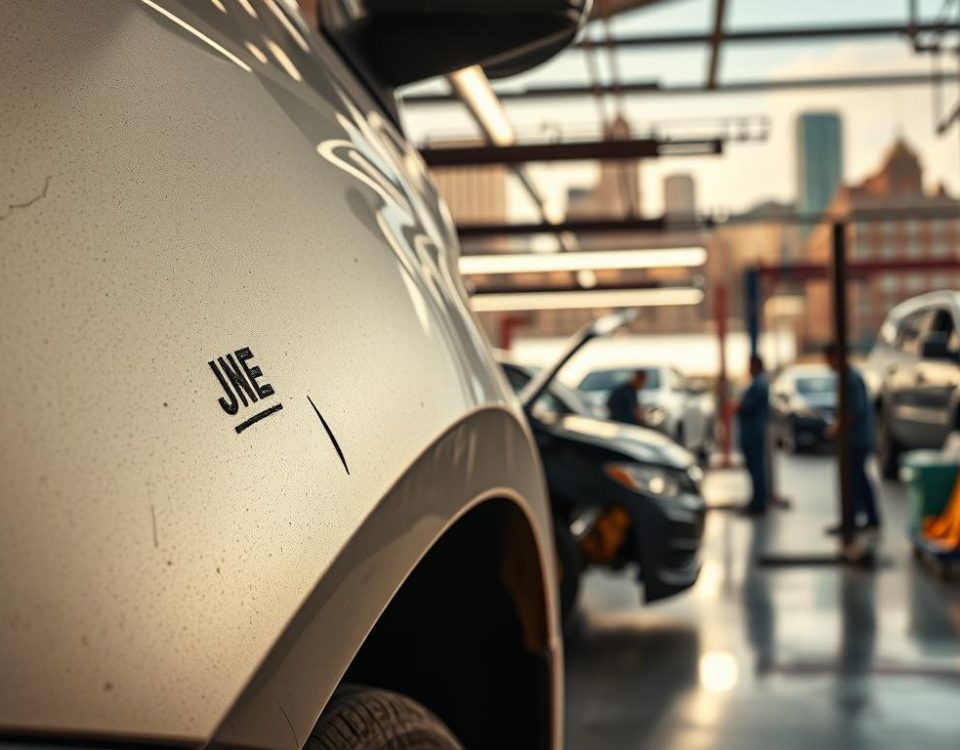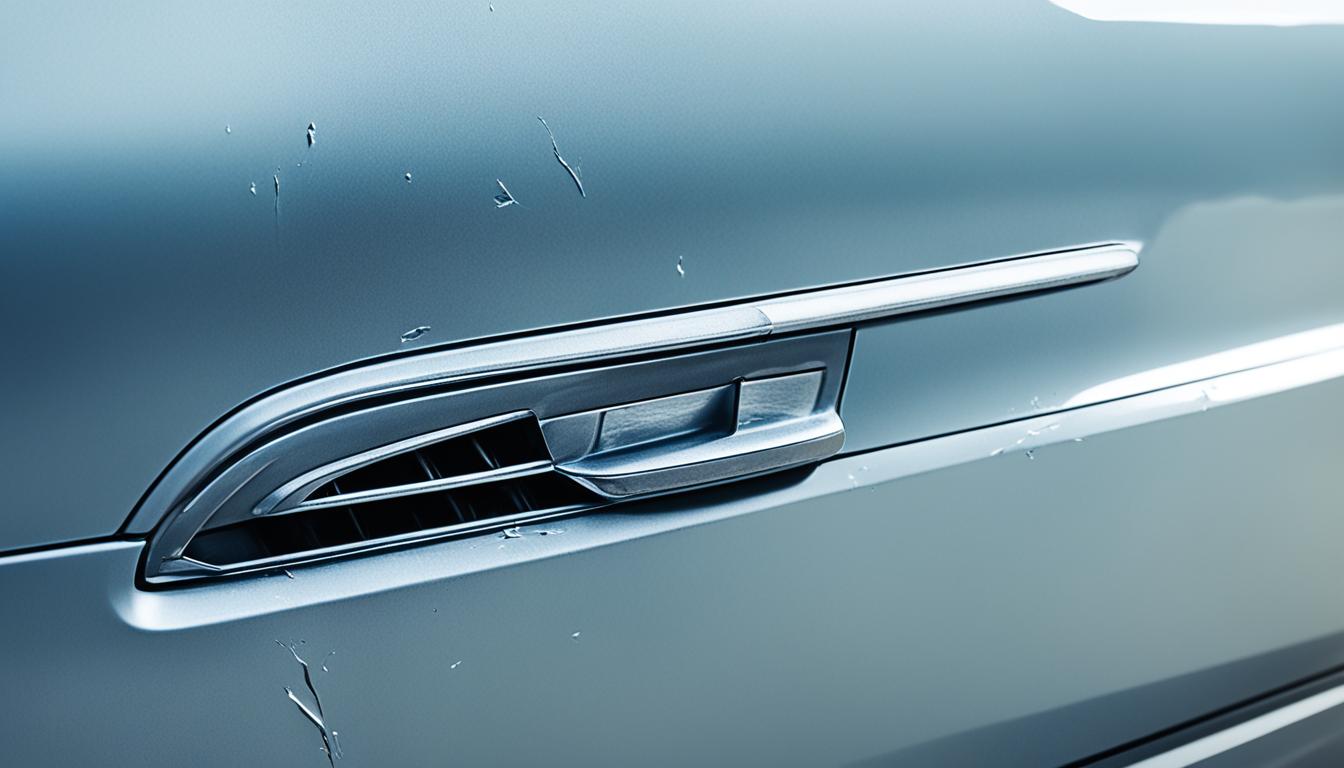
Repairing Minor Collision Damage: Quick and Affordable Solutions
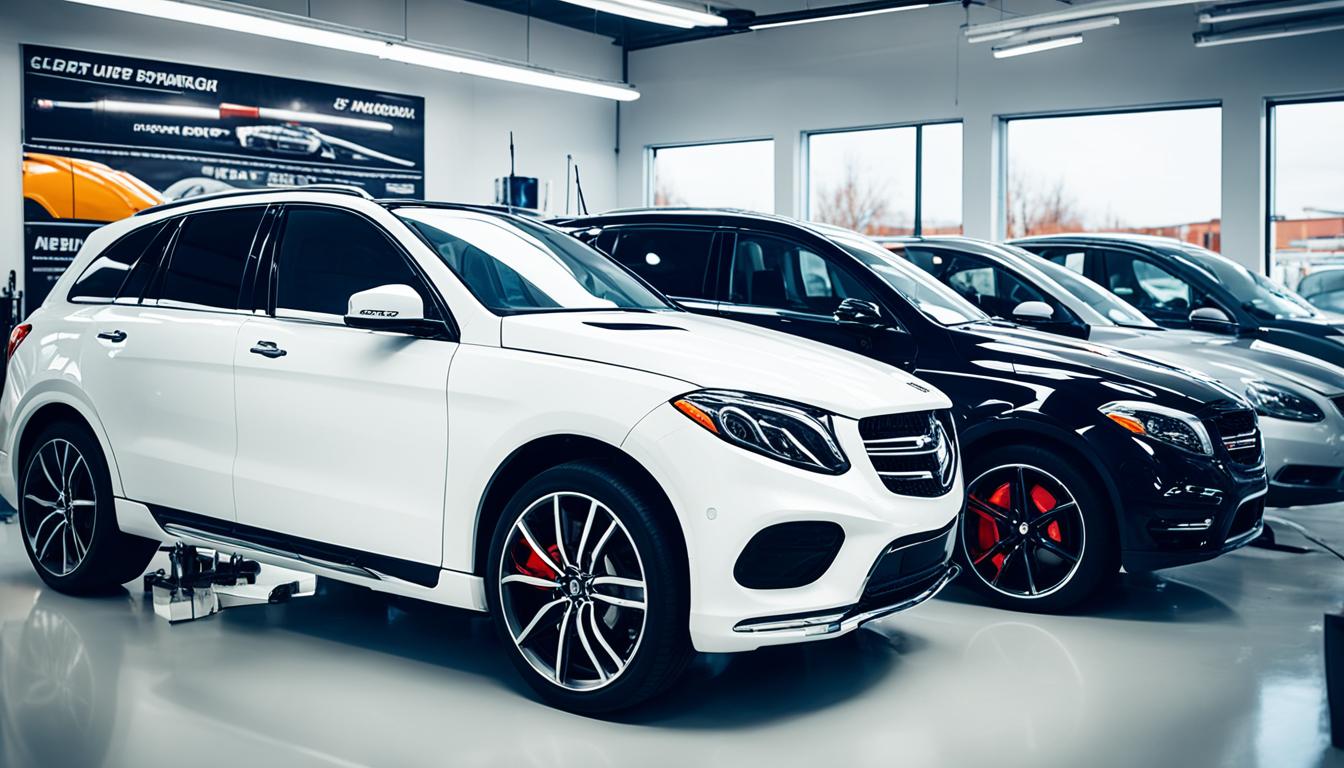
Comprehensive Car Body Repair Services for Every Need
Nothing’s more stressful or scary than getting into a head-on collision. Whether it’s a fender bender in a crowded parking lot or a more serious accident on the highway, the aftermath can leave your vehicle with visible front-end damage. This damage doesn’t just affect the car’s aesthetics but it can also impact your vehicle’s safety and performance. In this guide, we’ll go through the steps you need to take to repair your front end after a collision.
Key Takeaways
- Front-end damage can significantly impact a vehicle’s safety and performance.
- Understanding the types of front-end damage and the repair process is crucial for getting your car back on the road.
- Choosing the right collision repair shop with the necessary expertise is essential for a successful repair.
- Knowing the potential costs and timelines involved can help you plan and budget for the repair process.
- Addressing severe collision damage promptly is important for restoring your vehicle’s safety and functionality.
Understanding the Aftermath of a Severe Collision
When a severe collision occurs, the damage to your vehicle can be extensive, affecting various components beyond the obvious cosmetic issues. From the front-end damage to the underlying structural integrity, understanding the full scope of the impact is crucial for ensuring a comprehensive collision repair process.
Types of Front-End Damage
Front-end collision damage can take many forms, including damage to the bumper, hood, headlights and taillights, fenders, radiator and cooling system, engine components, and even the frame. While cosmetic issues like scratched paint or a broken grille may be visible, internal damage can be more critical. It’s important to check for signs of leaks, which could indicate radiator or engine damage, and listen for any unusual noises when starting the car. Misalignment or difficulty steering may suggest frame damage, so a thorough assessment is essential.
Ensuring Vehicle Stability
Maintaining the stability of your vehicle after a collision is paramount for your safety. Never overlook even minor issues, such as a small oil leak or a flickering warning light, as these could be indicators of more serious underlying damage that may lead to hazardous driving conditions if left unaddressed. When deciding on repairs, prioritize your safety over cost or convenience—your well-being is worth far more than any repair bill.
By understanding the potential types of front-end damage and ensuring the overall stability of your vehicle, you can take the necessary steps to address the aftermath of a severe collision and prepare for the collision repair process ahead.
Severe Collision Damage: Assessing the Extent
After a severe collision, thoroughly inspecting your vehicle is crucial to determine the extent of the damage. This assessment will provide valuable insights into the repairs needed to restore your car to its pre-accident condition.
Examining Your Vehicle After an Accident
Start your vehicle inspection by carefully examining the front bumper and fenders. Look for any cracks, dents, or deformities that may have occurred during the collision. Check the headlights as well, as they can be susceptible to damage that may not be immediately visible.
Next, open the hood and inspect the engine compartment. Look for signs of leaks, such as fluid dripping or pooling, as well as any damage to hoses, wiring, or other components. Even if the damage appears minor, it’s important to have a professional technician thoroughly assess the area to identify any underlying issues.
Don’t forget to inspect the windshield for small cracks or chips that could worsen over time. These seemingly minor issues can quickly escalate and compromise the structural integrity of your vehicle, so it’s best to address them promptly.
While some damage may be evident, it’s important to remember that not all collision-related issues will be visible to the untrained eye. That’s why it’s crucial to have your vehicle thoroughly inspected by a trusted vehicle inspection specialist who can identify issues and provide an accurate assessment of the damage that needs to be addressed.
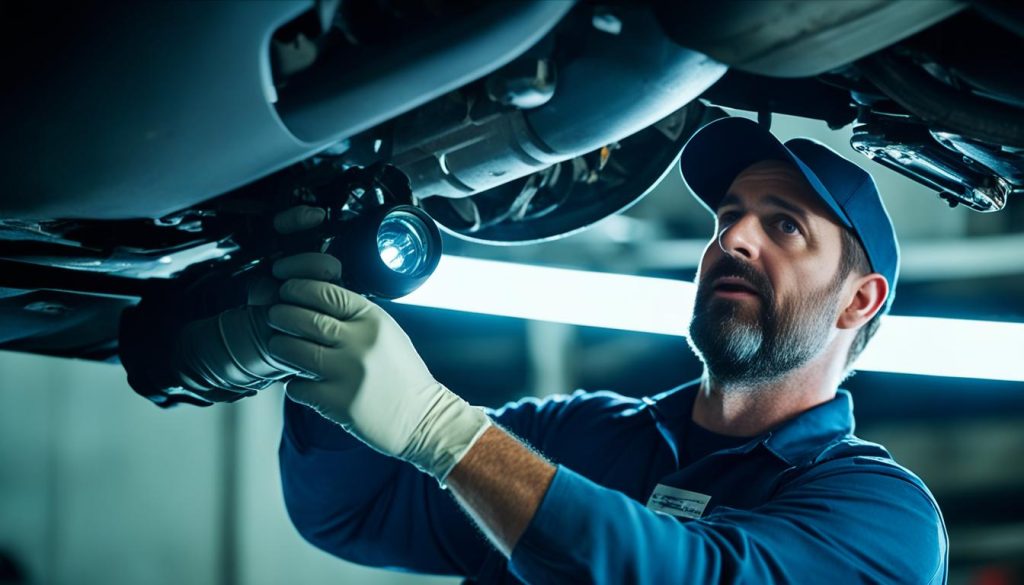
The Step-by-Step Repair Process
Once you have assessed the damage, it’s time to get your car back on the road. The repair process involves several crucial steps to restore your vehicle to its pre-collision condition. Let’s explore the key components of this process, from front-end frame repair to suspension and alignment adjustments.
Front-End Frame Repair
If your vehicle has sustained frame damage, it’s essential to have it repaired by a certified technician. Attempting DIY frame repair can lead to further complications and compromise the structural integrity of your car. A skilled professional will use specialized tools and equipment to realign the frame, ensuring your vehicle’s safety and stability.
Replacing vs. Repairing Front-End Parts
When it comes to repairing or replacing front-end parts, the decision depends on the extent of the damage and cost-effectiveness. Some components, like headlights and taillights, can be repaired by replacing individual bulbs or lens covers. However, if there is significant structural damage, these parts may need to be replaced entirely. Your technician can provide guidance on the most cost-effective and safe option for your specific situation.
The repair process also includes aligning the suspension and wheels, as well as addressing any airbag system issues. This comprehensive approach ensures that your vehicle is fully restored to its pre-collision condition, providing you with a safe and reliable mode of transportation.
By understanding the step-by-step repair process, you can feel confident in your ability to navigate the aftermath of a severe collision and get your car back on the road. Remember, working with a trusted and experienced collision repair shop is crucial for a successful and hassle-free repair experience.
Severe Collision Damage: Repair Costs and Timelines
When it comes to repairing severe collision damage, the costs and timelines can vary significantly. The extent of the damage plays a crucial role in determining the repair expenses and the time required to get your vehicle back on the road.
Front-end collision repairs can range from a few hundred dollars for minor work to over $10,000 for a complete frame replacement. Bumper repair or replacement can cost between $500 and $3,000, while suspension and alignment issues can add another $200 to $1,500 to the total repair bill. Engine, transmission, and electrical system damage can further increase the repair costs, typically ranging from $500 to $7,500.
Aesthetic repairs, such as painting and dent removal, can also contribute to the overall repair costs, with an estimated range of $150 to $1,000. The total repair timeline can vary just as much, with some repairs taking a few days while more extensive work can take several weeks, depending on the shop’s workload and the availability of parts.
It’s important to understand that repair costs and repair timelines are highly dependent on the severity of the collision damage. Obtaining accurate collision repair estimates from a reputable collision repair shop is crucial in planning your next steps and budgeting accordingly.
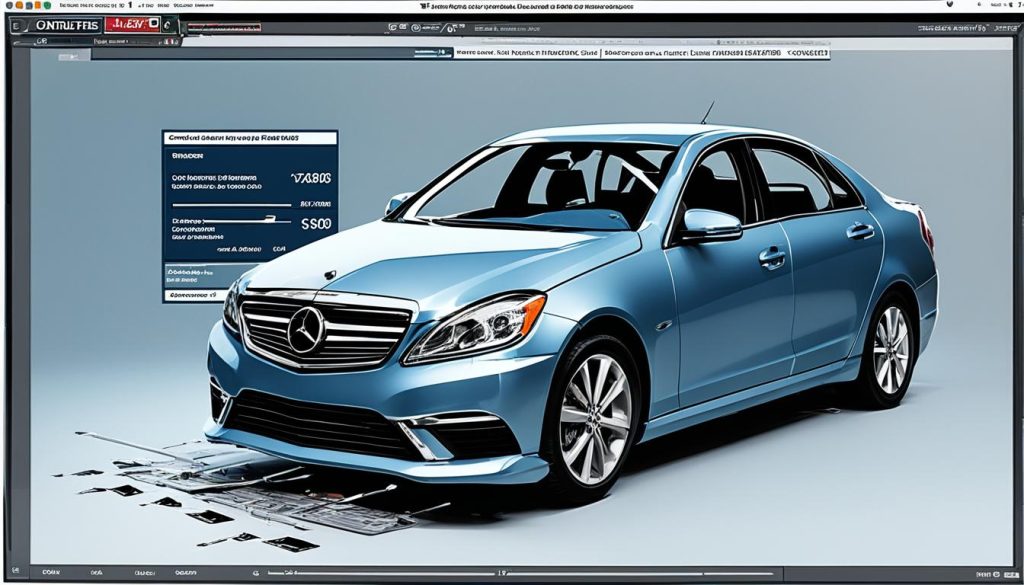
By being prepared and understanding the potential repair costs and repair timelines associated with severe collision damage, you can make informed decisions and navigate the repair process with greater confidence.
Choosing the Right Collision Repair Shop
When it comes to restoring your vehicle after a severe collision, choosing the right collision repair shop is crucial. The experience and expertise of the technicians, as well as the shop’s certification and reviews, can make all the difference in ensuring your car is back on the road safely and efficiently.
Experience and Expertise
Look for a collision repair shop that specializes in repairing front-end collision damage, particularly for your vehicle’s make and model. Experienced technicians should be familiar with common issues associated with this type of damage and know how to address them effectively. They should have a deep understanding of the complex systems involved in the front-end of your car, from the frame to the suspension and steering components.
Certification and Reviews
Ensuring the collision repair shop is certified by recognized automotive organizations is also crucial. Certified shops adhere to specific standards of repair quality and technician training, giving you the peace of mind that your vehicle is in capable hands. Additionally, check online reviews and ask for recommendations from friends, family, or your insurance company. Positive feedback from others can be a reliable indicator of a repair shop’s reputation and the quality of their work.
By choosing a collision repair shop with the right experience, expertise, and certifications, you can be confident that your vehicle will be restored to its pre-collision condition, keeping you and your loved ones safe on the road.
Conclusion
As we’ve explored, dealing with severe collision damage can be a complex and challenging process, but with the right approach, we can overcome these hurdles and get our vehicles back on the road safely. The key takeaways from this guide are to prioritize safety, choose a reputable collision repair shop, and stay informed throughout the repair process.
While the journey may seem daunting, we now have a deeper understanding of the various types of front-end damage, the steps involved in the repair process, and the importance of working with certified professionals. By following these best practices, we can ensure our vehicles are restored to their pre-collision condition and regain the confidence to get behind the wheel once again.
Navigating the final thoughts and key conclusions of this guide, we’re reminded that with the right knowledge and support, we can emerge from a severe collision stronger and more resilient. By taking the time to assess the damage, explore our options, and partner with skilled technicians, we can minimize the impact and get back on the road swiftly and securely.
FAQ
What types of front-end damage can occur after a severe collision?
Why is it crucial to prioritize safety over cost or convenience when deciding on repairs?
How should I examine my vehicle for damage after a collision?
What is involved in the front-end frame repair process?
When should I replace versus repair front-end parts?
How much can front-end collision damage repairs cost, and how long can the process take?
FAQ
What types of front-end damage can occur after a severe collision?
Front-end collision damage can affect numerous areas of your vehicle, including the bumper, hood, headlights and taillights, fenders, radiator and cooling system, engine components, and even the frame.
Why is it crucial to prioritize safety over cost or convenience when deciding on repairs?
Ensuring the stability of your vehicle after a collision is crucial for safety. Minor issues like a small oil leak or a flickering warning light could be signs of serious underlying damage that may lead to hazardous driving conditions if not addressed immediately. Your life is worth more than any repair bill.
How should I examine my vehicle for damage after a collision?
After a collision, you should examine your vehicle for damage, including checking the front bumper and fender for any cracks or dents, looking for cracks in the headlights, checking under the hood for signs of leaks or damage, and assessing the windshield for small cracks that could grow over time. Not all damage may be visible, so it’s important to have your car thoroughly inspected by a professional.
What is involved in the front-end frame repair process?
If your vehicle has sustained frame damage, it is essential to have it repaired by a professional. A certified technician will use specialized tools and equipment to realign the frame and restore it to its original state. The repair process also includes aligning the suspension and wheels, replacing or repairing front-end parts, and addressing any airbag system issues.
When should I replace versus repair front-end parts?
The decision to repair or replace front-end parts depends on the extent of the damage and cost. Some components, like headlights and taillights, can be repaired by replacing individual bulbs or lens covers. However, if there is extensive structural damage to these parts, they may need replacement. It is best to consult with a professional technician for advice on the most cost-effective and safe option.
How much can front-end collision damage repairs cost, and how long can the process take?
Repairing front-end collision damage can vary significantly in cost, ranging from 0 for minor work to ,000 for complete frame replacement. Bumper repair or replacement can cost between 0 and ,000, and suspension and alignment issues can add another 0 to
FAQ
What types of front-end damage can occur after a severe collision?
Front-end collision damage can affect numerous areas of your vehicle, including the bumper, hood, headlights and taillights, fenders, radiator and cooling system, engine components, and even the frame.
Why is it crucial to prioritize safety over cost or convenience when deciding on repairs?
Ensuring the stability of your vehicle after a collision is crucial for safety. Minor issues like a small oil leak or a flickering warning light could be signs of serious underlying damage that may lead to hazardous driving conditions if not addressed immediately. Your life is worth more than any repair bill.
How should I examine my vehicle for damage after a collision?
After a collision, you should examine your vehicle for damage, including checking the front bumper and fender for any cracks or dents, looking for cracks in the headlights, checking under the hood for signs of leaks or damage, and assessing the windshield for small cracks that could grow over time. Not all damage may be visible, so it’s important to have your car thoroughly inspected by a professional.
What is involved in the front-end frame repair process?
If your vehicle has sustained frame damage, it is essential to have it repaired by a professional. A certified technician will use specialized tools and equipment to realign the frame and restore it to its original state. The repair process also includes aligning the suspension and wheels, replacing or repairing front-end parts, and addressing any airbag system issues.
When should I replace versus repair front-end parts?
The decision to repair or replace front-end parts depends on the extent of the damage and cost. Some components, like headlights and taillights, can be repaired by replacing individual bulbs or lens covers. However, if there is extensive structural damage to these parts, they may need replacement. It is best to consult with a professional technician for advice on the most cost-effective and safe option.
How much can front-end collision damage repairs cost, and how long can the process take?
Repairing front-end collision damage can vary significantly in cost, ranging from $500 for minor work to $10,000 for complete frame replacement. Bumper repair or replacement can cost between $500 and $3,000, and suspension and alignment issues can add another $200 to $1,500 in repairs. The overall repair timeline can also vary, taking anywhere from a few days to several weeks, depending on the extent of the damage and the workload at the repair shop.
What should I look for when choosing a collision repair shop?
When choosing a repair shop, look for a shop with professional knowledge in repairing front-end collision damage, particularly for your vehicle’s make and model. Ensure the shop is certified by recognized automotive organizations, and check online reviews and ask for recommendations from friends, family, or insurance companies to ensure the shop has a good reputation.
,500 in repairs. The overall repair timeline can also vary, taking anywhere from a few days to several weeks, depending on the extent of the damage and the workload at the repair shop.
What should I look for when choosing a collision repair shop?
When choosing a repair shop, look for a shop with professional knowledge in repairing front-end collision damage, particularly for your vehicle’s make and model. Ensure the shop is certified by recognized automotive organizations, and check online reviews and ask for recommendations from friends, family, or insurance companies to ensure the shop has a good reputation.



